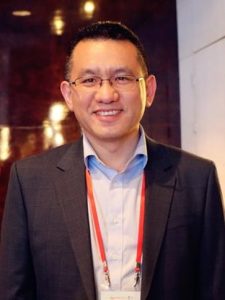Biography:
He earned his B.S. and M.S. at the University of Science and Technology of China (USTC), and Ph.D. at the University of Illinois in the United States (UIUC). He then completed postdoctoral research at UIUC and ETH Zurich in Switzerland. Currently, he is a professor in Geochemistry at USTC and serves as the Deputy Director of the Deep Space Exploration Lab. He serves as an associate editor for the international journal, GCA. He has published approximately 70 papers as first-author or corresponding author in international journals such as Nature, PNAS, EPSL, GCA, and Geology. He has been honored with funding from the National Distinguished Youth Foundation and has received awards including the Hou Defeng Young Scientist Award, the Sun Yat-sen Award, the Chinese Youth Science and Technology Award, and the Youth Science Award from the Ministry of Education.
Research Interest:
1.Metal stable isotopes: analyses, fractionation mechanisms, reservoir investigation, and applications of a number of systems, such as V, Ba, Rb, and U.
2.Early earth and rocky planets: the origin and evolution of the Earth and development of habitability.
3.Magmatism: processes and timescales of magmatism and subduction using U-series disequilibria and isotope geochemistry.
4.Ore deposit formation: transport and enrichment of metal elements during magmatism and fluid activity.
5.Environmental problems: tracing and remediating heavy metal pollution by combining geochemistry and biology.
What You Can Expect in the Project:
Tracing Rb cycling and enrichment among multiple layers using Rb isotopes
Rubidium is highly incompatible and fluid mobile. Rb isotope data have great potential in the studies on cosmochemistry and geochemistry. However, Rb isotope study is still in its infant, and many important problems including analytical method and isotope theory require further exploration. This project includes improving analytical methods for Rb isotopes; obtaining equilibrium fractionation factors of Rb isotopes among mineral, melt, and fluids using first-principles calculation and high P-T experiments; systematically estimating Rb isotope compositions of the main reservoirs of the earth; and using Rb isotopes to trace the cycling and enrichment between the multiple layers of the earth, particularly focusing on the cycling between the crust and mantle and in the surface system, and understanding how Rb is enriched in magmatic and fluid processes.



